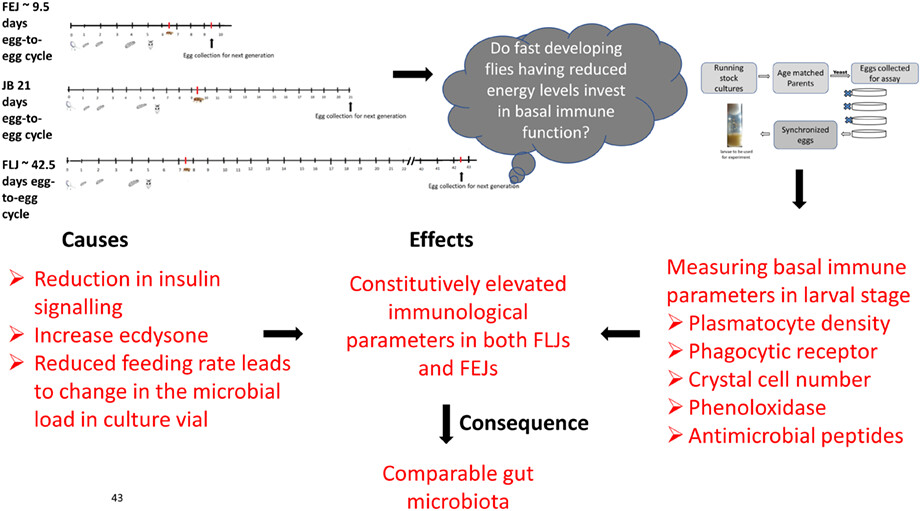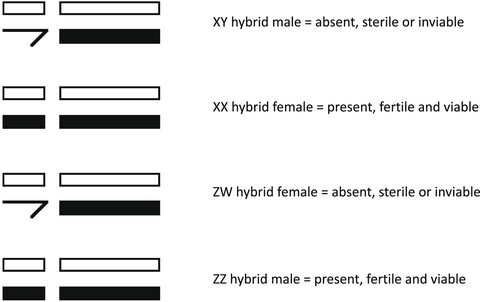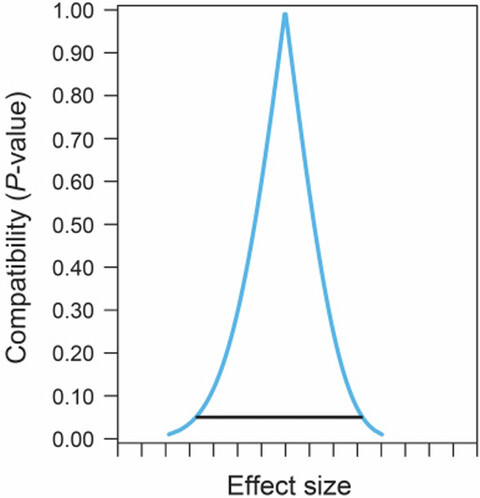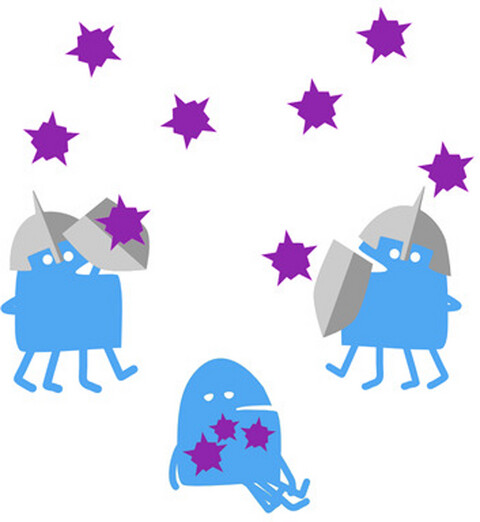Journal list menu
Export Citations
Download PDFs
2023
Does the definition of a novel environment affect the ability to detect cryptic genetic variation?
- First Published: 28 October 2023
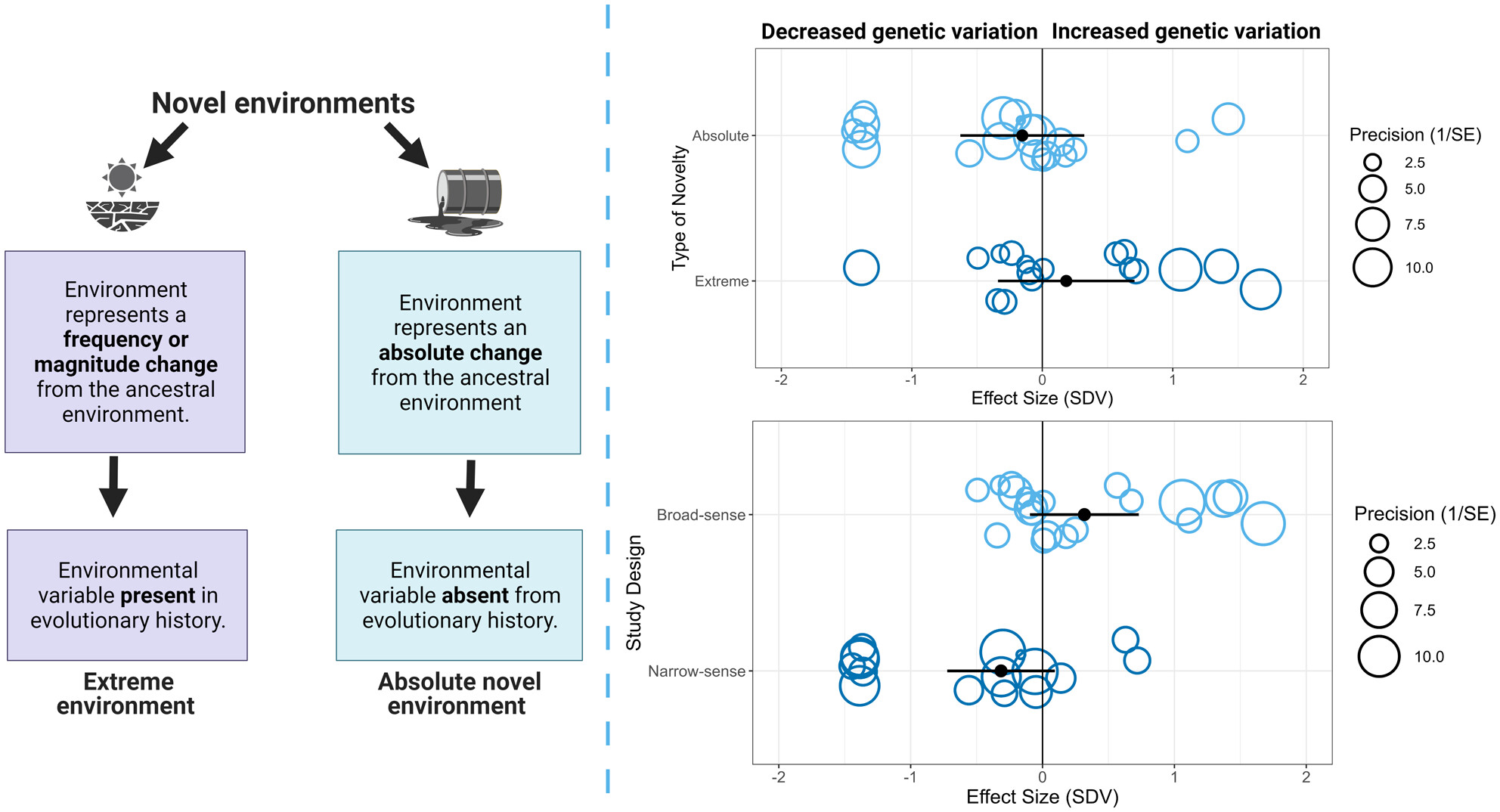
In this graphical abstract, a flow chart on the left outlines the criteria used to classify novel environments. On the right, two forest plots are presented: one comparing effect sizes (standardized mean difference in total genetic variance, SDV) between extreme and absolute novel environments, and the other comparing effect sizes between broad-sense and narrow-sense study designs.
Implementing code review in the scientific workflow: Insights from ecology and evolutionary biology
- First Published: 09 October 2023
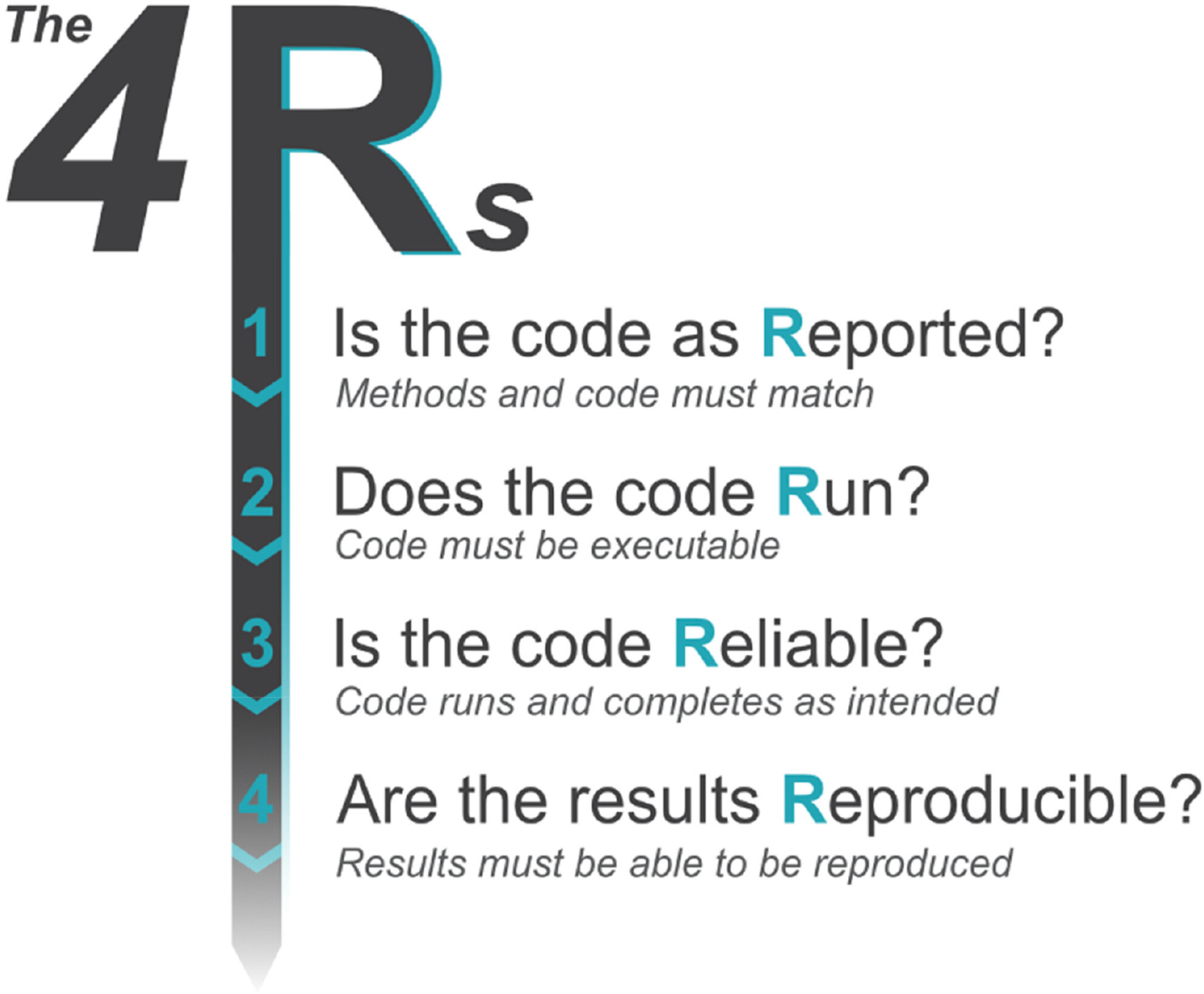
Code review is the process of either informally (as part of a group, as colleagues) or formally (as part of the peer review process) checking and evaluating each other's code and is a critical method of reducing errors and increasing research reproducibility and reliability. In this paper, we provide a detailed commentary on how to effectively review code (including introducing the four Rs), how to set up your project to enable this form of review and detail its possibleimplementation at several stages throughout the research process.
Adaptive phenotypic and genomic divergence in the common chaffinch (Fringilla coelebs) following niche expansion within a small oceanic island
- First Published: 23 July 2023
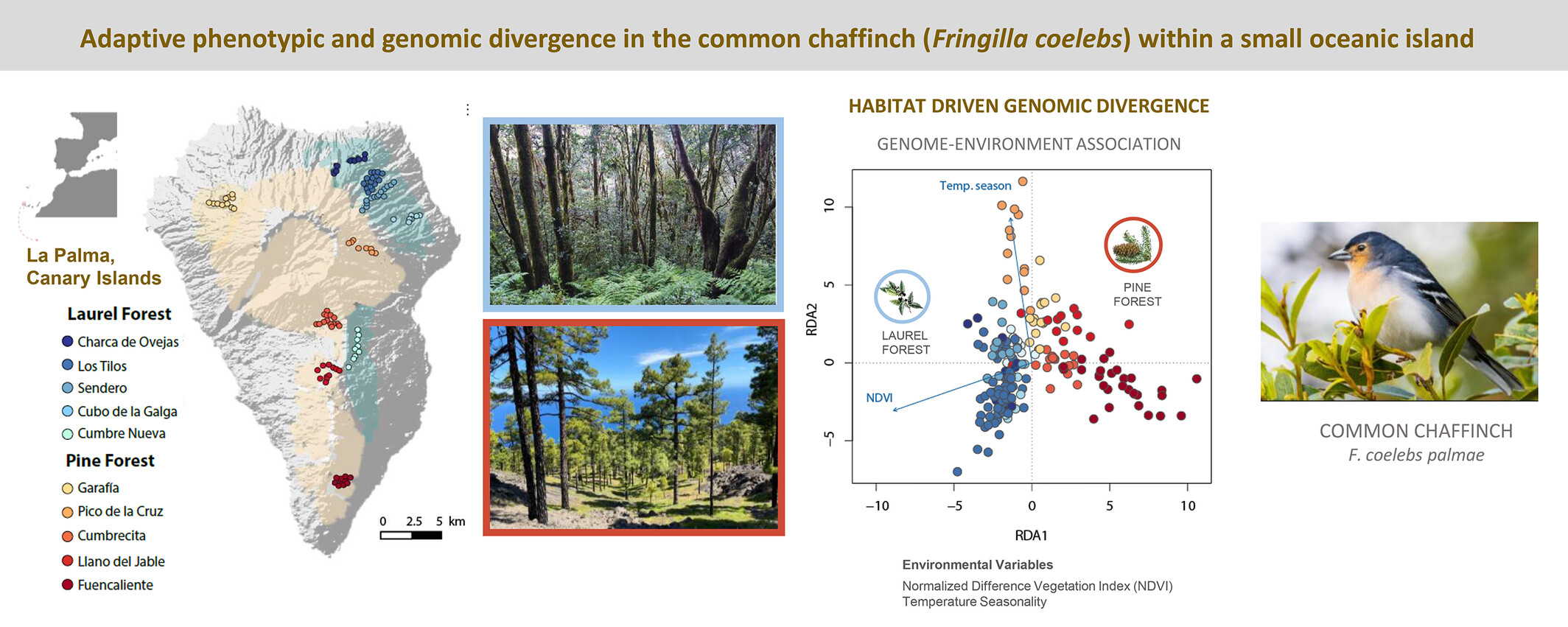
We study the process of local adaptation in the common chaffinch to two contrasting habitats on the island of La Palma, the humid laurel forest and the dry pine forest. We document habitat-related phenotypic divergence, and using genome–environment association analysis on a small fraction of the genome, we detect adaptive genomic divergence at a small spatial scale associated with habitat type.
Plasticity and genetic effects contribute to different axes of neural divergence in a community of mimetic Heliconius butterflies
- First Published: 21 June 2023
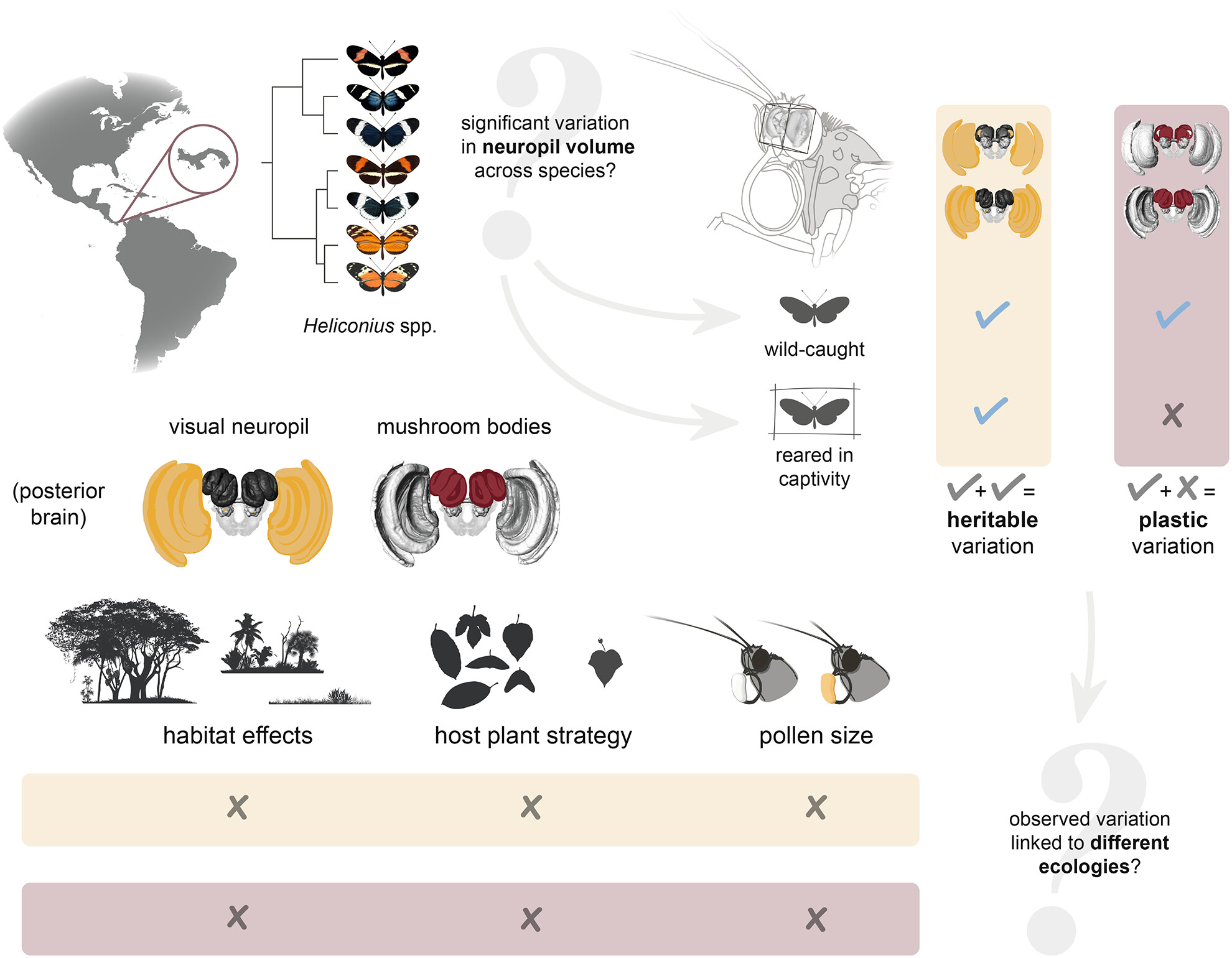
Comparing brain morphology across a Panamanian community of Heliconius butterflies, we find evidence for interspecific variation along two axes: heritable divergence in the size of visual brain components, and plastic differences in mushroom body size, a central component of learning and memory systems. We illustrate the impact of small-scale spatial effects on mushroom body plasticity.
Bet-hedging via dispersal aids the evolution of plastic responses to unreliable cues
- First Published: 24 May 2023

Populations may make bad predictions when when using partially reliable cues to track changing environments (left). These mistakes can render plasticity deleterious (s < 0); right) when cue reliability is low, but dispersal among demes spreads out the effects of mistakes and allows the evolution of adaptive plasticity.
Correlated responses in basal immune function in response to selection for fast development in Drosophila melanogaster
- First Published: 19 April 2023
Does sexual conflict contribute to the evolution of novel warning patterns?
- First Published: 26 January 2023
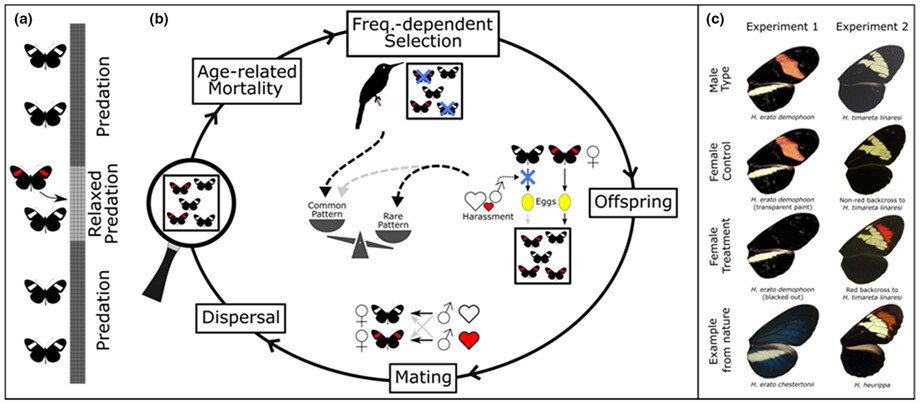
Why warning patterns are so diverse is an enduring evolutionary puzzle. Because predators associate particular patterns with unpleasant experiences, an individual’s predation risk should decrease as the local density of its warning pattern increases, promoting pattern monomorphism. Male Heliconius use warning patterns as mating cues, but mated females may suffer costs if this leads to disturbance, favouring novel patterns.
Bait-ER: A Bayesian method to detect targets of selection in Evolve-and-Resequence experiments
- First Published: 21 December 2022
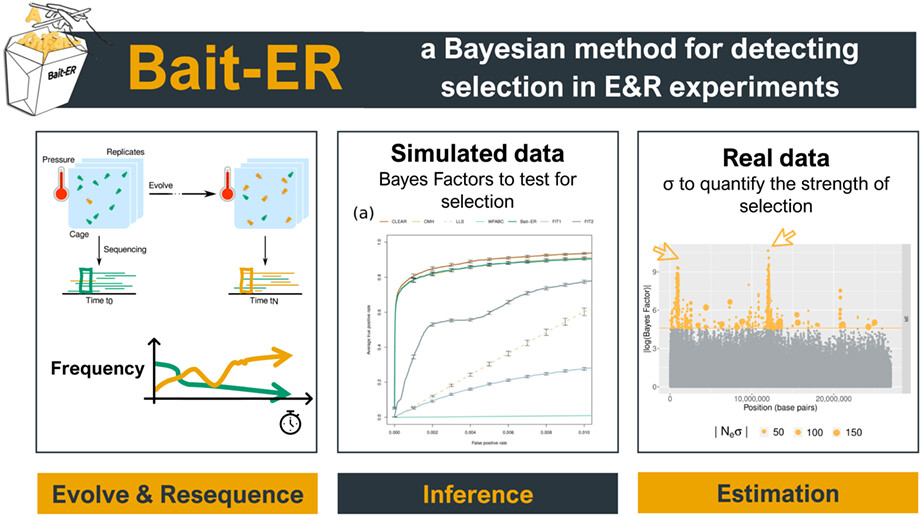
We present Bait-ER - a method for estimating selection in allele frequency trajectory data from E&R experiments. Bait-ER models allele frequencies through time in a population with overlapping generations. Our method performs well in both simulated and real time series data and it tests for selection without the need for simulating an empirical null distribution.
2022
Compiling forty years of guppy research to investigate the factors contributing to (non)parallel evolution
- First Published: 13 September 2022
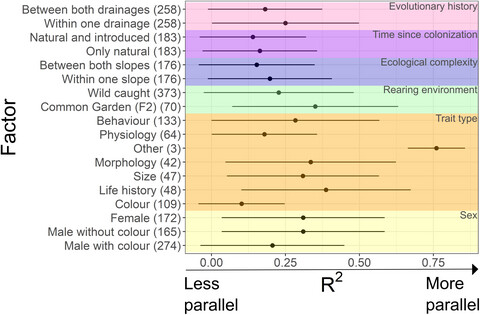
We quantified the extent of phenotypic parallelism among high and low-predation ecotype pairs using data from published studies on Trinidadian guppies, long considered a classic study system in parallel evolution. We did so overall, and in regard to six factors that might contribute to the extent of parallelism: sex, trait type, rearing environment, ecological complexity, evolutionary history, and time since colonization. R2 values indicate amount of parallelism, and we found that colour traits are especially weakly parallel and that evolutionary history is an important contributor to the extent of parallelism. Our results contribute to the growing consensus that the extent of parallelism in fish is variable and often weak.
The phenomenon of red and yellow autumn leaves: Hypotheses, agreements and disagreements
- First Published: 16 August 2022
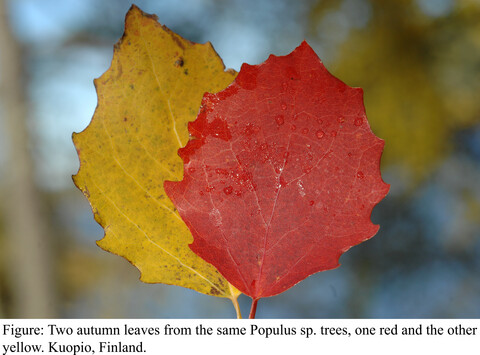
Yellow and red autumn leaves typical to temperate/boreal trees defend important resources released following the photosynthetic system breakdown, and mobilized for storage to be used in the next spring. This coloration, especially red, defends from excess light and oxidative stress and against herbivores. I describe the hypotheses, findings and disagreements about the functions and evolution of yellow/red autumn leaves.
Contamination effects on sexual selection in wild dung beetles
- First Published: 01 June 2022
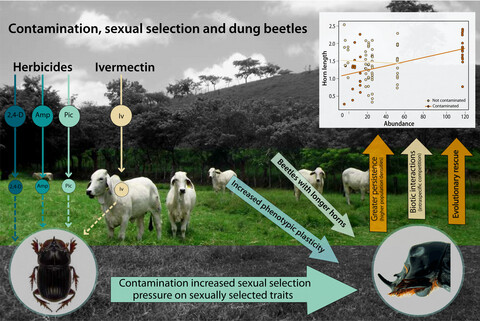
By evaluating horned dung beetles in contaminated cattle pastures, our study reveals that contamination interferes with sexual selection by affecting male's relative investment to sexual traits. Higher abundance of large-horned males in contaminated pastures indicates demographic impacts of sexual selection in nature and can be explained by evolutionary rescue promoted by sexual selection or by plastic responses in horn size according to population density. The orange arrows support the results of this work.
Why and how we should join the shift from significance testing to estimation
- First Published: 18 May 2022
Environment dependence of the expression of mutational load and species’ range limits
- First Published: 15 March 2022
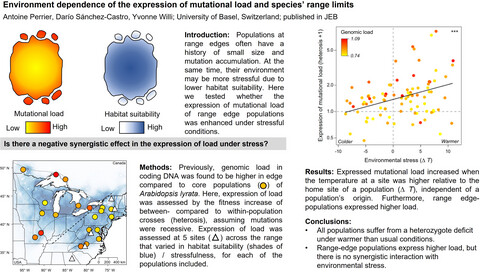
Recent theory suggests species’ range limits may be caused by edge populations suffering from mutation accumulation as a result of increased genetic drift. Here we tested whether the expression of mutational load of range-edge populations was dependent on environmental stress typical for peripheral environments. We found that the expression of mutational load was not enhanced under stress in Arabidopsis lyrata, but that this species suffers from a general stress-dependent heterozygote deficit. Our results suggest that range-edge populations may suffer from two independent genetic Allee effects, heightened mutational load and stress-dependent load linked to heterozygote deficiency.
Body size and sexual selection shaped the evolution of parrot calls
- First Published: 11 February 2022
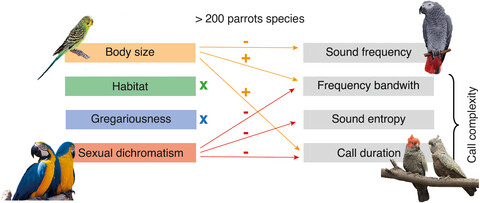
Across parrot species, body size correlates with longer calls, lower sound frequency and wider frequency bandwidths, while sexual dichromatiam correlates negatively with various aspects of call complexity, as predicted by the transference hypothesis for the evolution of different sexual signals. Photos credits: © Wikimedia common.
A tangled web: Comparing inter- and intraspecific mating dynamics in Anasa squash bugs
- First Published: 30 November 2021
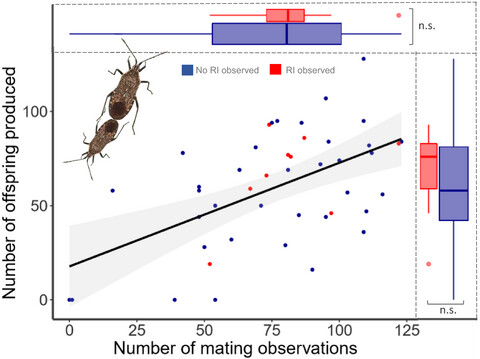
Reproductive interference (RI), costly reproductive interactions between individuals of different species, is a common yet little understood behaviour. In this study, we compare inter- and intraspecific mating dynamics in the squash bug Anasa tristis to better understand drivers of interspecific mating interactions. We uncovered high levels of reproductive interference (19% of individuals engaged in interspecific matings), but the majority of mating activity took place between conspecifics. Female Anasa tristis were also highly polyandrous, and we found those which engaged in occasional interspecific matings had comparable hatching success to those which did not. In this system, at least, relatively high levels of reproductive interference likely emerged as a by-product of relaxed intraspecific pre-copulatory choice, paired with limited fitness penalties in our focal species.
2021
Epistatic interactions between sex chromosomes and autosomes can affect the stability of sex determination systems
- First Published: 22 September 2021

Epistatic interactions between sex chromosomes and autosomes can cause increased stability of the sex determination system, favouring its maintenance over the invasion of novel systems, or decreased stability where an invasion of a novel sex determination system becomes favoured. The nature of these effects on the stability of sex determination system depends strongly on the type of epistatic interaction, its strength, and the type of newly-invading sex determination gene.
Colour pattern variation forms local background matching camouflage in a leaf-mimicking toad
- First Published: 31 August 2021

Colour variation is common in camouflaged species. Variation may be continuous or discrete, with different patterns found in the same, or geographically distinct, populations. Sometimes variation is linked to microhabitat specialization, sometimes to the advantages of having a rare pattern (with which predators aren't familiar). In a Neotropical toad, we found that continuous colour pattern variation matches the local leaf-litter, such that the toads benefit from both microhabitat-specific camouflage and mimicking dead leaves.
Sperm competition risk affects ejaculate strategy in terms of sperm number but not sperm size in squid
- First Published: 24 June 2021
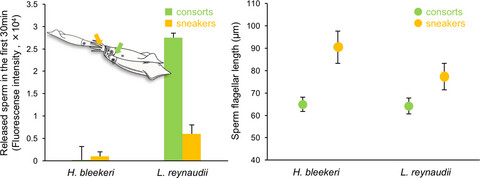
Although numbers of studies have showed that sperm competition risks affect male’s ejaculate traits, the effect on sperm size evolution is still controversial. By comparison of two squid species, we show that while levels of sperm competition determine number of released sperm, sperm size are determined more by the mode of sperm storage and fertilization.




